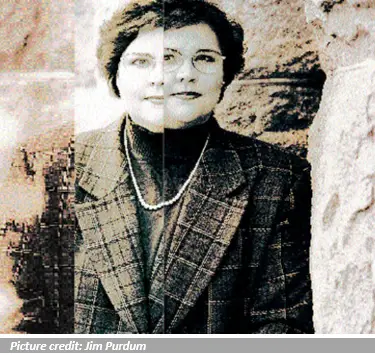Patricia Burgus is a woman that underwent psychiatric therapy over the course of a six year period – which culminated in her supposedly having memories of being a member of a satanic cult, abusing her sons and being the victim of sexual abuse herself.
But years later, Burgus blamed her Doctors, stating that they had implanted the memories in her through questionable interview techniques. In this article, we look at the case.

Background
The 1980s and 1990s witnessed an enormous hysteria in terms of allegations of satanic ritual abuse cases, as well as widespread accusations of sexual abuse from people that had supposedly recovered past memories.
These memories were often being recovered during therapy sessions that people were seeking for mental health conditions. But these memories were often being recovered as a result of some techniques being employed by therapists that seemed to be questionable.
While in the modern day, any therapy that involves trying to uncover past memories is generally frowned upon, it was a very different case in the 1980s and 1990s.
Hundreds of people were coming forward as a result of uncovering apparent memories of being abused. Many of these memories were later seen as false, though there was no certain way of knowing in many cases. Victims were generally believed.
Therefore, during the 1980s and 1990s, efforts to uncover forgotten memories were commonplace. Therapists became convinced that current mental distress could be explained by a past trauma that a person had repressed – also known as unconsciously pushing something to the back of the mind.
In later years, the tide changed, which saw many people like Elizabeth Loftus and Ralph Underwager in showing how easily false memories could be implanted.
Therapy and Accusations
Burgus was getting therapy in the middle of this hysteria. Burgus was 29-year-old at the time of seeking therapy, and attended a psychiatric unit in Chicago.
Burgus was receiving therapy for an apparent case of multiple personality disorder – known in the current day as Dissociative Disorder.
At the time, many speculated that this condition was caused by childhood trauma. But in later records, it was revealed that various therapists at the hospital doubted the diagnosis.
Over the course of the six years, Burgus became convinced of a wild array of memories. These revolved around her participation in a satanic cult.
Within this cult, she believed that she had sexually abused her sons, had eaten a meatloaf out of human flesh, had slaughtered babies, had been assaulted by panthers and other zoo animals, had been buried alive on a few occasions, had sexual intercourse with President John F. Kennedy and engaged in cannibalism.
These were some wild accusations. It was topped off by Burgus’ claim that the leaders of this cult had been none other than Burgus’ parents.
Burgus was also led to believe she had over 300 personalities. Burgus was under the care of psychiatrist Bennett Braun, who used hypnosis to try and discover the root cause of Burgus’ problems.
He also prescribed multiple, powerful medications to Burgus – including sodium amytal – a powerful medication from the hypnotic, sedative and anxiolytic class of drugs.
She attended daily sessions with Braun, and slowly recalled these memories. Burgus accepted these memories as being true.
As well as hypnosis, Braun used finger signals as an attempt to communicate with the apparent different personalities residing within Burgus. Under sedation, Burgus was in a trance-like state for most sessions. Most questions were believed to be rather leading, making it difficult for Burgus to deny any such claims.
Based on the accusations, Braun did his own test on a burger from a family picnic. He sent the meat to a laboratory for testing – wanting to see if it returned as human meat. However, it came back as being a standard beef burger.
An interview with an FBI agent followed, and the accusations were levelled at her parents. The parents were shocked at the allegations. The parents were devout Catholics, and denied all accusations. Patricia Burgus cut ties with her parents.
Burgus’ sons also partook in therapy. They were also given medications that were powerful, even by adult standards – including Xanax. The children were beset by a range of side effects.
They would go on to enrol at a school for children with learning disabilities. Racked with guilt at the plight of her children, Burgus reportedly attempted to take her own life.
Leaving therapy in 1992
By 1992, Burgus had left the psychiatric centre and had weaned off her medication. She started to question her own memories, and in her own words, started ‘doing a little bit of math’.
Having looked at her allegations, she could find no evidence for their truthfulness. In the end, it seemed that the idea of a cult defied any form of logic.
She also contacted the manufacturer of her main medication (Inderal/propranolol) – to investigate its effects further. The person she spoke to told Burgus that her dosage was so high that they hadn’t even tested that level on animals.
Burgus believed that her memories could have been induced by a combination of the powerful medication and Braun’s techniques. Eventually, Burgus came to the realisation that her accusations were false.
In 1993, she sued Dr. Braun for malpractice, and the hospital for its negligence. Burgus criticised Braun’s therapy methods, likening them to ‘goofy, controversial cr*p’. Audiotapes released further questioned some of the therapeutic methods used.
A documentary on television focused on the case, and criticised the techniques further. Renowned memory expert Elizabeth Loftus was among those to condemn the actions of therapists [1].
Settlement
The hospital looked into the case in great detail, and came to the conclusion that Braun’s care of Brugus had been negligent. A trial was possible, but in the end a settlement was reached between the two parties.
A significant $10.6million settlement was reached, with the insurance companies of Braun and the hospital paying out the fee. This was the biggest settlement involving alleged implantation of memories by therapists.
The settlement also stipulated that none of the parties in the case would be deemed responsible. Dr. Braun called the settlement a ‘travesty’, and defended his methods, stating that Burgus had been the one to instigate allegations of abuse.
Later developments
Burgus later reconciled with her family. However, she suffered from Depression in the later years of her life. Her diagnosis of Dissociative Identity Disorder has remained open to debate.
Bennett Braun was the founder of the International Society for the Study of Trauma and Dissociation – an organisation that researched trauma-based conditions and memory.
However, Braun was later sued by many other patients, with other settlements being reached. Braun remained steadfast in his belief that he had fulfilled his duty of care in this case.
The Burgus case was one of many controversial cases involving recovered memories. Others include the case of Gary Ramona, Katrina Fairlie, and the infamous McMartin Preschool case.
Summary
The case of Patricia Burgus is another example of the controversy behind recovered memories. In this case, it seems that Burgus’ allegations were false.
However, in many cases it is one person’s word against another. This is what has made this entire topic so contentious.
VISIT OUR RECOVERED MEMORY BLOG
If you have been affected by any of the content in this article, you can see our crisis resources at this link.
Disclaimer
This website should be used purely for informational purposes, and does not intend to, nor should it ever, be used as a replacement for professional medical advice.
We strive to keep all of our pages updated, and ensure that our website is full of factual and in-depth information. However, we encourage you to browse this website with care.
As a reminder, this website and all content within it cannot and should not replace the advice of a trained medical professional. You can read our full disclaimer at this link.
Helplines
If you are struggling with your mental health, help is available. With the right support and treatment, you can make a recovery. For information on helplines, or if you are in a state of crisis, please visit our crisis page by clicking on the relevant link for your geographical location (United Kingdom), (United States), (International). You can also see how to get mental health treatment and the process involved by clicking this link.
References
[1] Loftus, E. (1998). The Price of Bad Memories. Skeptical Inquirer Magazine. 22 (3), p23-24.


































